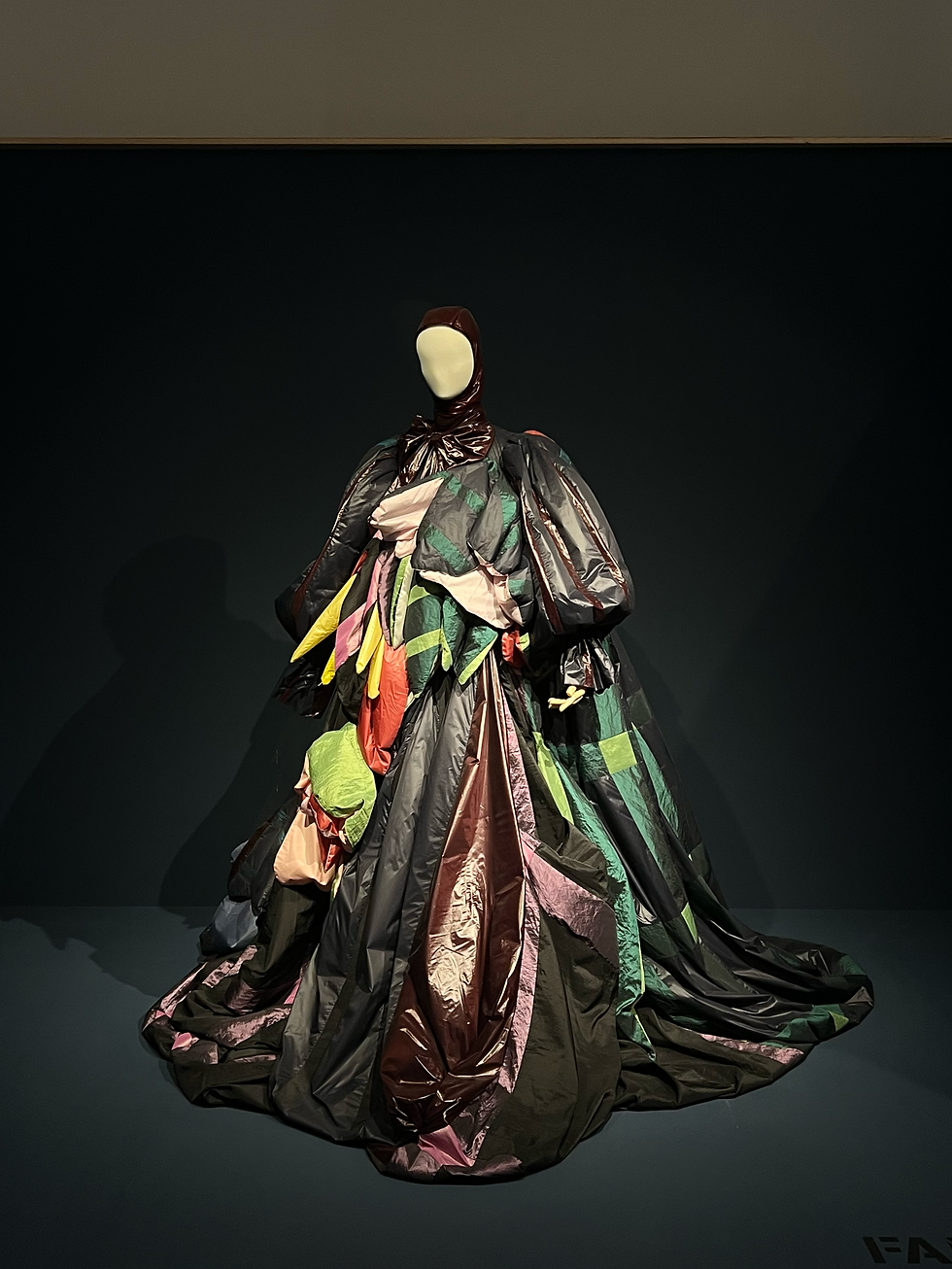Is Thrifting the Key to Sustainability or is it Scandi Minimalism?
- marietahovhann
- Jan 30, 2024
- 4 min read
As Macklemore once said, “One man’s trash, that’s another man’s come up.” Or is it? How many times have you seen thrifting hauls on TikTok or heard fashion girlies talk about how sustainable and environmentally conscious they are while opening their seventh package of the day? Maybe a gazillion? But how many times have you looked into what true sustainability and environmental consciousness look like? I bet not that many.
We can all claim we’re queens of sustainability because we thrift most of our clothing and accessories. Yes, thrifting in itself is a way to prolong the lifecycle of garments and give the socially vulnerable a chance to shop but if you do it as a hobby every day, aren’t you defeating the entire purpose? Not surprisingly, the answer is yes and it seems like the true problem is overconsumption.
According to a report by the resale service ThredUp, in 2019, around 40% of Gen Z were buying second-hand (thanks to TikTok), compared to less than 30% in 2016. This is a slay at the first glance. However, fashion consumption hasn’t decreased. In fact, it is expected to grow by 63% by 2030. It seems like the popularization of second-hand shopping has created an illusion that it’s the guilt-free version of buying a lot of things we’re not even going to use.
The TikTok algorithm constantly feeds me content about fashion and beauty (I know it’s my fault and my FYP is accustomed to my preferences). I watch hundreds of reviews, OOTDs, GRWMs, and hauls a day. My wishlist is constantly growing. I feel like my Notes and Safari apps hate me at this point because every single time I see something new and shiny I just have to Google it and add it to my list. And I don’t close my Safari tabs so I don’t lose the items that I like. If you’re anything like me or like fashion at all, I’m sure you know what I’m talking about.
I know I’m part of the problem but if I were to shift the blame I could say that the media and the fashion industry have promoted overconsumption for as long as I can remember and conditioned our brains to crave it (I just used some brave therapy lingo there, that was thrilling).
So what can we do about this? How do we truly become more mindful when shopping? I think the answer is to copy the Scandinavian approach like they’re the A student and you haven’t done any of the reading for the final exam.
Maybe I’m high off fresh impressions but this past weekend I was in Copenhagen for the first time and I was amazed by their culture of sustainability and social consciousness. As a matter of fact, every time I visit a Scandinavian country I am astonished by how far ahead they are from the rest of the world when it comes to sustainability and planet-friendly technology. No wonder they are the happiest countries on Earth. The streets are incredibly clean. The local fashion brands all care about the planet and the metro stations are just unbelievable- the Paris metro could never!
While I was there I went to an exhibition at the Design Museum Denmark that made me really think about how these Scandinavian countries infuse everyday objects with their ideology. The exhibition is titled “The Future is Present” and is all about questioning the way we’ll design things in the future. Besides all the delightful work showing how life will most likely become terrifyingly lonely, a portion of the exhibition focused on how we can repurpose byproducts in fashion. The fashion brand Guðrun & Guðrun from the Faroe Islands designed Vindur, a dress entirely crafted from woven silk and milk yarn sourced from waste produced in dairy production. Now that is true environmental consciousness if you ask me. Especially given that nowadays most recycling is downcycling and they upcycled dairy byproducts into a fully functional garment!
When I posted my stories of the day on the gram and tagged my friends from Norway and Denmark, I asked them “Why do you think Scandinavia is so good at being sustainable?”. “Because we really love our countries and the nature we have,” is what they basically responded. Now that I look back, Nicholas Nybro, a Danish fashion designer who had another exhibition at the same museum, created an entire collection inspired by different regions in Denmark so it all makes sense.
While I was shopping I noticed that most local brands used recycled materials and people chose quality over quantity. They didn’t seem in a rush to buy the next best thing. They don’t need many things. They just need high-quality essentials to make life hygge. Even the thrift shops had an elevated vibe where it was obvious that every item was loved and cared for previously.
I think this is why they’re slaying sustainability. They truly care about simplicity and quality and the portion of our planet they get to call home.
Thrifting is amazing and it for sure is better for the environment than purchasing brand-new items every single time. However, if it’s rooted in being trendy and satisfying our craving for buying new things, it is not going to help. What matters is reducing our consumption. I think we can learn a thing or two from Scandinavia. If we start caring about our nature as much as we care about flexing on social media, we’ll make an actual difference.








Comments